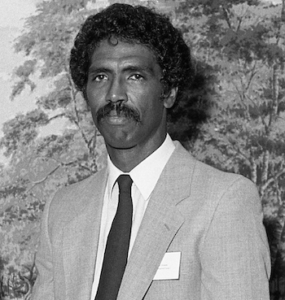
Henry Grooms
*Henry R. Grooms was born on this date in 1944. He is a Black aerospace engineer.
He is the son of Leonard D. Grooms and Lois Pickell Grooms from Cleveland, Ohio. He grew up wanting to be an architect but built space vehicles. How he got there is interesting: "I realized that my strong points (math and science) were more in line with engineering, so I chose the engineering that seemed closest to architecture—civil engineering."
He attended Howard University and Carnegie Mellon University, earning his bachelor's, master's, and Ph.D. degrees before joining Rockwell to work on the Apollo and Skylab programs. According to Howard's classmate and professor Taft Broome, he was not only one of the pioneers developing the Space Shuttle. He was also "the team leader who solved NASA's shuttle tile problems," an achievement without which manned space exploration could not have continued. Speaking of the Shuttle, Dr. Grooms' mid-1970s work analyzing Orbiter thermal and mechanical stresses is still the standard reference.
Dr. Grooms supervises 80 specialists and sits on teams working to ensure the spacecraft's structural integrity. Considering the current state of the Space Shuttle program, that work now is even more critical. Dr. Grooms is a steady producer of technical papers and a frequent presenter before technical symposia, conferences, and engineering organizations. Like Archibald Alexander, he's active in the American Society of Civil Engineers, although the structures and architecture he's most familiar with are in aerospace rather than bridges and roads. Then again, maybe not so different: Alexander designed and built the airfield from which the Tuskegee Airmen showed America the technological potential of its Black community.
Dr. Grooms is a bridge-builder of another sort. The father of 12 children with his wife, Tonie, Dr. Grooms became a father figure for many others through participation as a sports coach, school mentor, and Project Reach, a group he, Tonie, and friends organized to provide scholarships, counseling, tutoring, and exposure to disadvantaged L.A. youth and get them through college. About 200 youngsters have gone through the program, with up to 35 enrolled at any time. He's a builder who works with people as much as with physical structures, and his success demonstrates a lifetime of commitment.